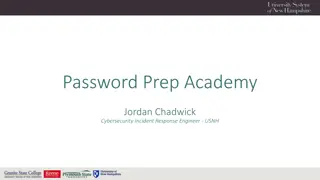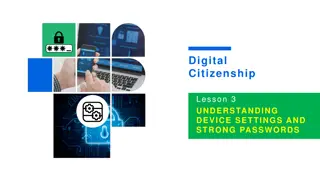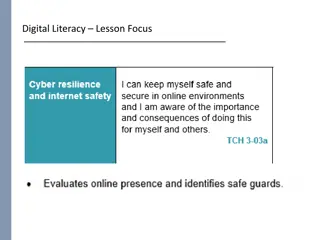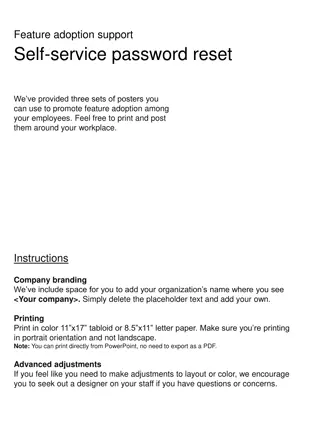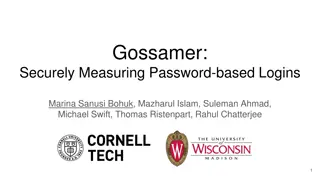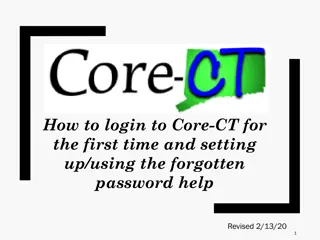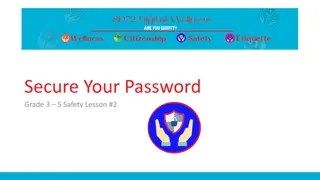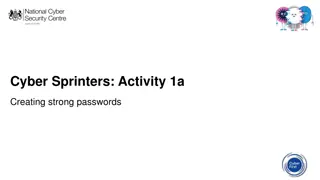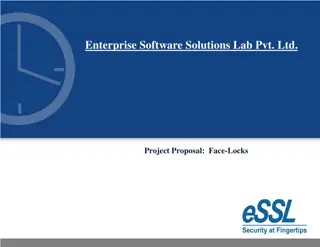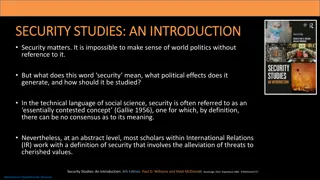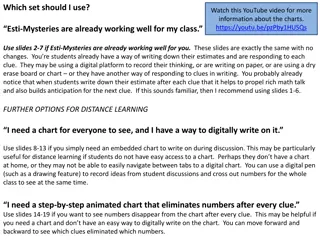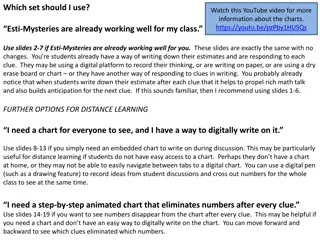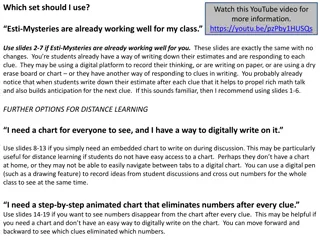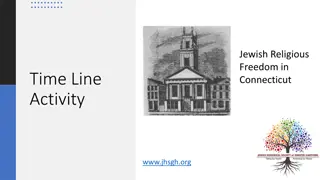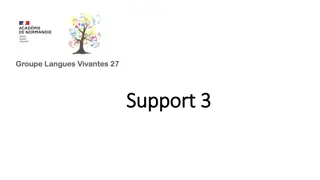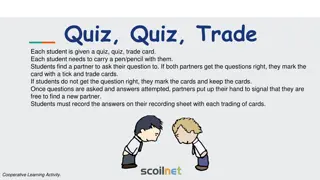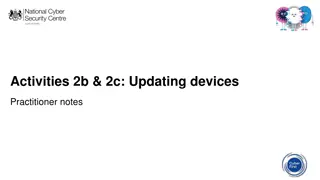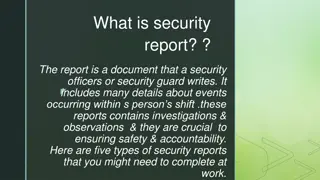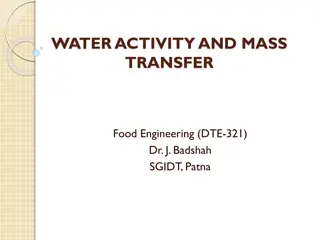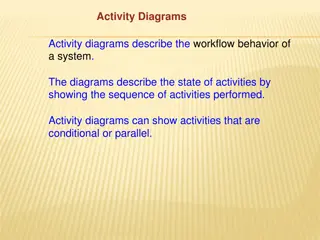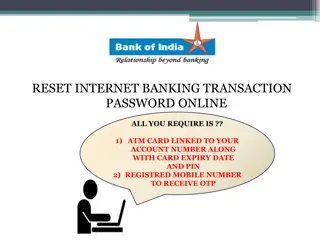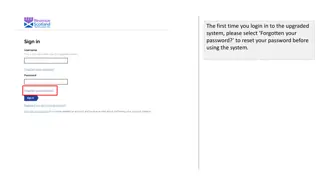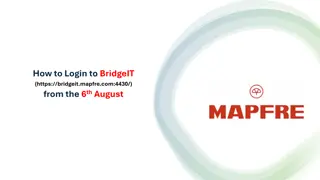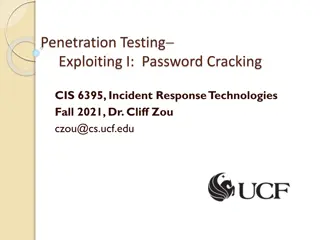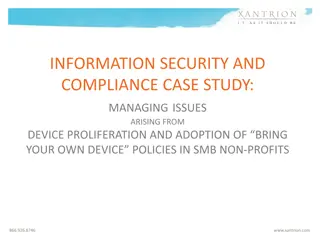Interactive Password Security Activity for Children
This presentation recaps the importance of strong passwords, techniques for creating them, and the significance of two-factor authentication. The lesson notes guide discussions on creating secure passwords using the "three random words" method and avoiding personal details. The interactive game "Guess My Password" engages children in exploring password security concepts in a fun way.
Download Presentation

Please find below an Image/Link to download the presentation.
The content on the website is provided AS IS for your information and personal use only. It may not be sold, licensed, or shared on other websites without obtaining consent from the author. Download presentation by click this link. If you encounter any issues during the download, it is possible that the publisher has removed the file from their server.
E N D
Presentation Transcript
Activity 1e: Passwords recap Practitioner notes
Learning outcomes This presentation consolidates all that s been covered in the Passwords lessons. Children understand the importance of a strong password. Children know how to create strong passwords using the three random words technique. Children understand the importance of two-factor authentication. Children understand why they need to keep their email account safe.
Lesson notes The final activity draws together what children have learnt through the preceding activities using the game Guess My Password . After completing this activity, discuss which parts of Amy s profile should be avoided when creating passwords from three random words. NCSC advise adults to never use the personal details that can be easily obtained from looking at social media profiles (such as family names, pet names, birthdays, holiday destinations, sports teams) What would be the equivalent for pupils? Can they think of their own never use list?
Game instructions: Guess My Password Start by placing 10 pieces of treasure in the email inbox envelope. The aim of the game is for each player to collect as many pieces of this treasure. The winner is whoever has the most after 15 minutes. The Protector of the treasure will guard it using a strong password and 2FA. The Hacker will try to guess the password; if successful they can steal one piece of treasure and can then try and guess the method of 2FA used, which earns them an additional piece of treasure. Each player is given a game sheet to keep a record of either the number of questions asked, or the parts of the password they have ascertained. The Hacker can also use the methods of 2FA to support them in guessing the type used as an additional layer of security. The Protector picks a password card (which is made from three of the red words on the character profile sheet) and a 2FA card. The Protector must keep these secret. The Hacker uses the profile sheet (possibly displayed on an interactive whiteboard) to ask the Protector of the treasure up to 20 questions to try and work out what the password is. The questions can only be answered with yes or no (for example, Does it start with a colour?) The Hacker can use the game sheet to keep track of correct guesses. The Hacker cannot guess the password in separate parts, it can only be guessed when complete. The Protector will use the game sheet to keep a tally of how many questions have been asked. If the password is guessed correctly by the Hacker within 20 questions, they collect a piece of treasure and can guess the method of 2FA. If they guess the 2FA correctly, they get another piece of treasure. If the Hacker guesses the password incorrectly, then the Protector and the Hacker swap roles and a new password is selected by the new Protector. Once the Hacker has attempted to guess the password (correctly or incorrectly) or 20 questions have been asked, the players swap roles.


